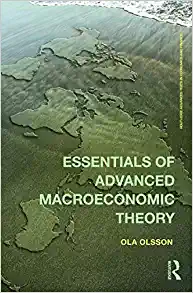Question
1 Australia's mining boom III We continue to analyze Australia's mining boom by using the model from Exercise 2 from Assignment 6. What happens to
1 Australia's mining boom III
We continue to analyze Australia's mining boom by using the model from Exercise 2 from
Assignment 6.
What happens to the (real) wage paid to low-skilled workers when the boom occurs? And
what happens to the (real) wage paid to mining engineers and viticulturists?
2 Labor, capital, and energy intensities of industries
In the context of the Heckscher-Ohlin model with the two production factors capital and
labor, we have discussed that industries differ in their labor and capital-intensities.
(a) Define labor and capital-intensity of an industry.
(b) Explain what we mean when we assume that there are no factor intensity reversals.
Illustrate the case of a factor intensity reversal using a suitable diagram.
(c) Human activity, particularly the production and consumption of energy-intensive goods
and the associated emissions of carbon dioxide into the atmosphere, is a major factor
driving global warming. Therefore, the European Union will introduce a carbon border
adjustment mechanism (CBAM) in the near future.
1
Imagine a variant of the Heckscher-
Ohlin model with two production factors labor and energy used in two industries. Define
labor and energy intensity of an industry in such a model. Can you think of examples
of an energy-intensive industry versus a labor-intensive industry?
3 . The effect of capital accumulation in China on its trade
pattern
We have seen in the lecture that while China was scarce in capital in 2000, since 2010, China
is abundant in capital. The reason for this is that the Chinese economy has accumulated
capital, i.e., it invested in its capital stock. We are interested in illustrating this capital
accumulation and learn its effects on China's trade pattern.
For the sake of this exercise, we think of China as a country endowed with two factors of
production, labor and capital, producing two goods, labor-intensive toys and capital-intensive
smartphones.
(a) Illustrate the PPF of China in the year 2000, when it was a capital-scarce country, and
today, when it is a capital-abundant country. We assume that the amount of labor has
not changed throughout this period.
(b) What do you predict has happened to China's comparative advantage? Which good does
China export in 2000, and today, according to your model? Explain (no graph needed).
(c) Is your prediction borne out by the data? Present evidence providing appropriate refer-
ences. Why, or why not?
Step by Step Solution
There are 3 Steps involved in it
Step: 1

Get Instant Access to Expert-Tailored Solutions
See step-by-step solutions with expert insights and AI powered tools for academic success
Step: 2

Step: 3

Ace Your Homework with AI
Get the answers you need in no time with our AI-driven, step-by-step assistance
Get Started


